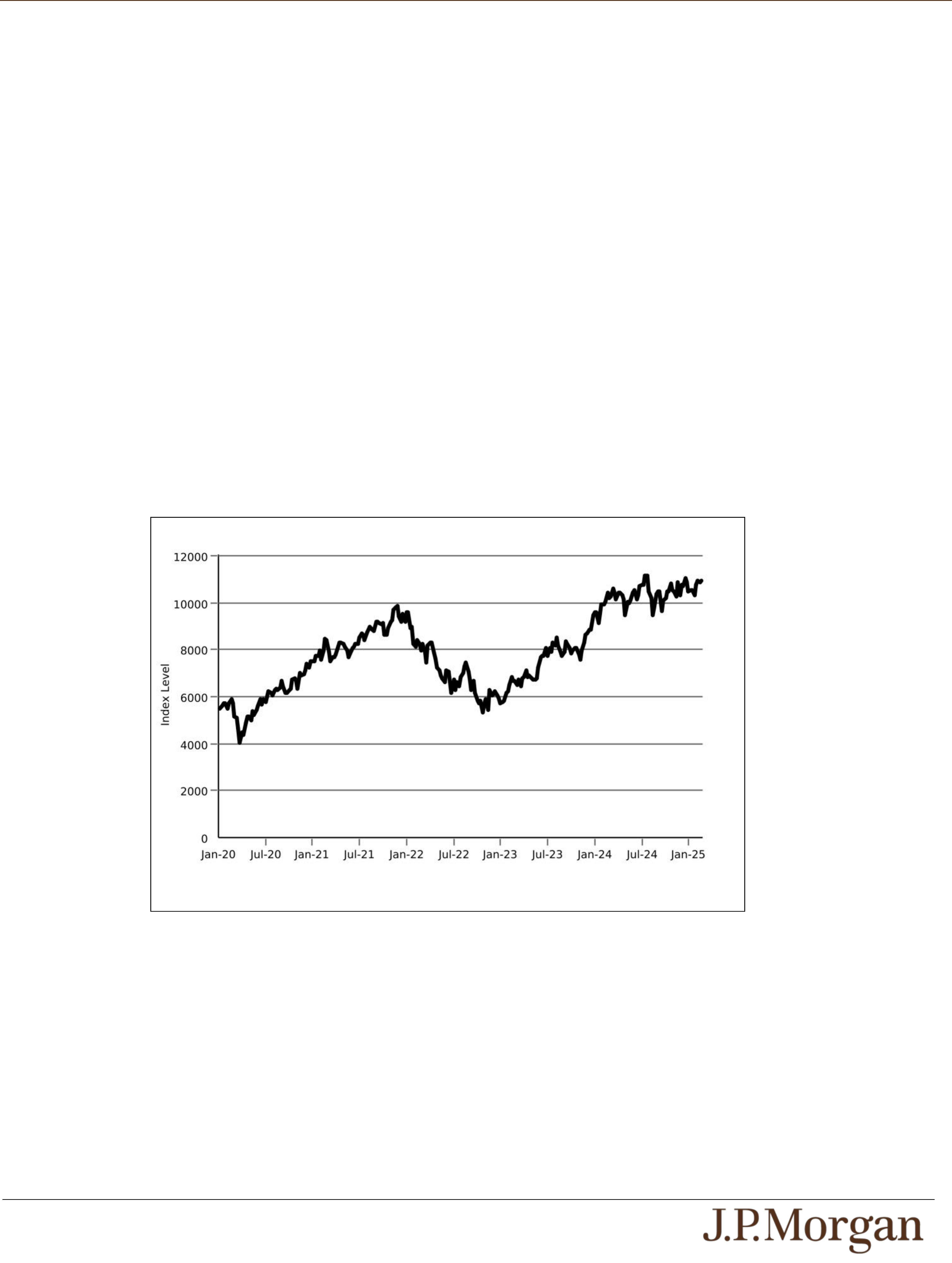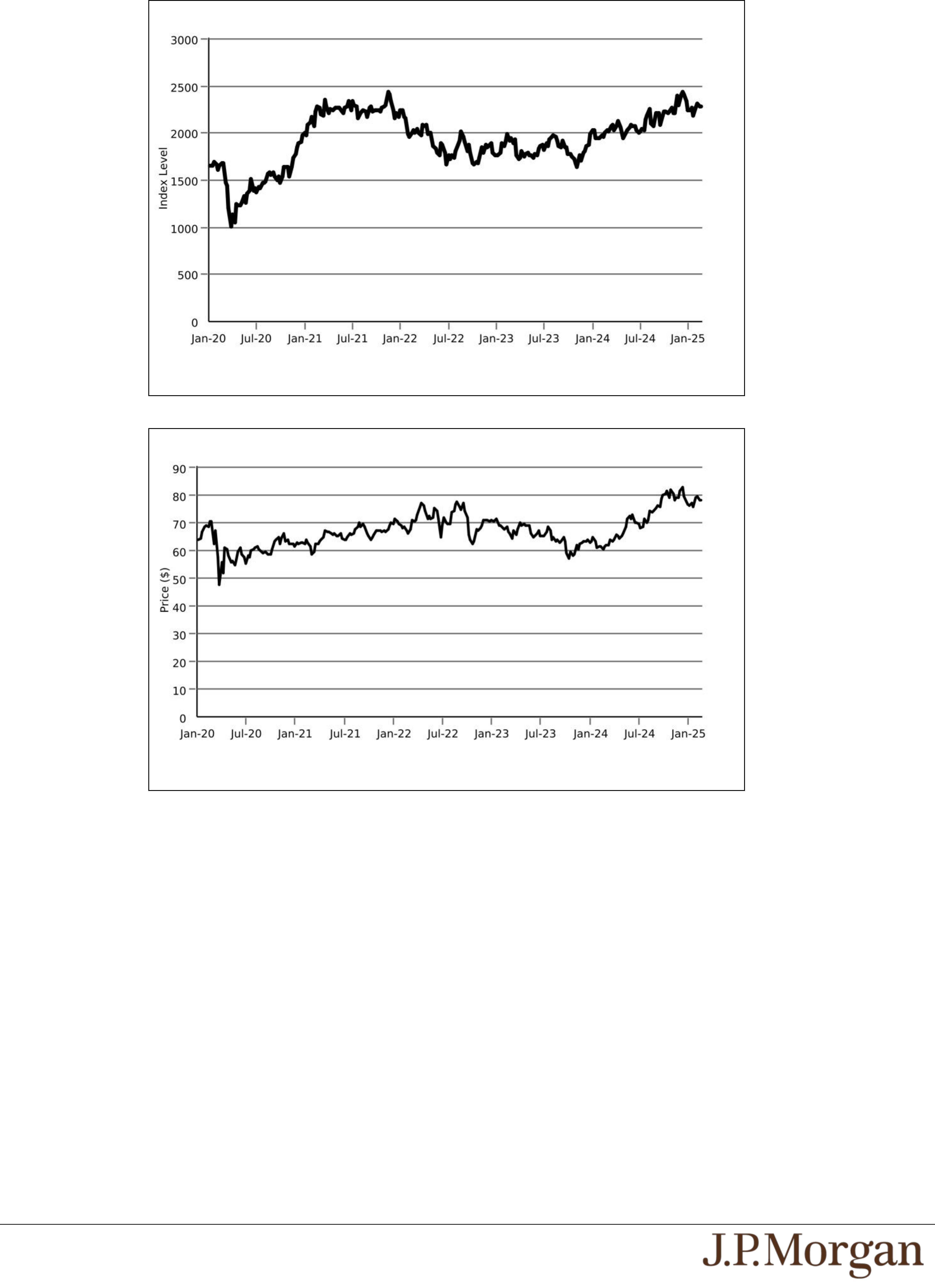● AN INVESTMENT IN THE NOTES IS SUBJECT TO RISKS ASSOCIATED WITH SMALL CAPITALIZATION STOCKS WITH
RESPECT TO THE RUSSELL 2000® INDEX —
Small capitalization companies may be less able to withstand adverse economic, market, trade and competitive conditions relative
to larger companies. Small capitalization companies are less likely to pay dividends on their stocks, and the presence of a dividend
payment could be a factor that limits downward stock price pressure under adverse market conditions.
● NON-U.S. SECURITIES RISK WITH RESPECT TO THE NASDAQ-100® TECHNOLOGY SECTOR INDEXSM —
The non-U.S. equity securities included in the Nasdaq-100® Technology Sector IndexSM have been issued by non-U.S. companies.
Investments in securities linked to the value of such non-U.S. equity securities involve risks associated with the home countries
and/or the securities markets in the home countries of the issuers of those non-U.S. equity securities. Also, with respect to equity
securities that are not listed in the U.S., there is generally less publicly available information about companies in some of these
jurisdictions than there is about U.S. companies that are subject to the reporting requirements of the SEC.
● RISKS ASSOCIATED WITH THE UTILITIES SECTOR WITH RESPECT TO THE FUND —
All or substantially all of the equity securities held by the Fund are issued by companies whose primary line of business is directly
associated with the utilities sector. As a result, the value of the notes may be subject to greater volatility and be more adversely
affected by a single economic, political or regulatory occurrence affecting this sector than a different investment linked to securities
of a more broadly diversified group of issuers. Utility companies are affected by supply and demand, operating costs, government
regulation, environmental factors, liabilities for environmental damage and general civil liabilities and rate caps or rate changes.
Although rate changes of a regulated utility usually fluctuate in approximate correlation with financing costs, due to political and
regulatory factors, rate changes ordinarily occur only following a delay after the changes in financing costs. This factor will tend to
favorably affect a regulated utility company’s earnings and dividends in times of decreasing costs, but conversely, will tend to
adversely affect earnings and dividends when costs are rising. The value of regulated utility equity securities may tend to have an
inverse relationship to the movement of interest rates. Certain utility companies have experienced full or partial deregulation in
recent years. These utility companies are frequently more similar to industrial companies in that they are subject to greater
competition and have been permitted by regulators to diversify outside of their original geographic regions and their traditional lines
of business. These opportunities may permit certain utility companies to earn more than their traditional regulated rates of return.
Some companies, however, may be forced to defend their core business and may be less profitable. In addition, natural disasters,
terrorist attacks, government intervention or other factors may render a utility company’s equipment unusable or obsolete and
negatively impact profitability. Among the risks that may affect utility companies are the following: risks of increases in fuel and
other operating costs; the high cost of borrowing to finance capital construction during inflationary periods; restrictions on
operations and increased costs and delays associated with compliance with environmental and nuclear safety regulations; and the
difficulties involved in obtaining natural gas for resale or fuel for generating electricity at reasonable prices. Other risks include
those related to the construction and operation of nuclear power plants, the effects of energy conservation and the effects of
regulatory changes. These factors could affect the utilities sector and could affect the value of the equity securities held by the
Fund and the price of the Fund during the term of the notes, which may adversely affect the value of your notes.
● RISKS ASSOCIATED WITH THE TECHNOLOGY SECTOR WITH RESPECT TO THE NASDAQ-100® TECHNOLOGY SECTOR
INDEXSM —
All or substantially all of the equity securities included in the Nasdaq-100® Technology Sector IndexSM are issued by companies
whose primary line of business is directly associated with the technology sector. As a result, the value of the notes may be subject
to greater volatility and be more adversely affected by a single economic, political or regulatory occurrence affecting this sector
than a different investment linked to securities of a more broadly diversified group of issuers. The value of stocks of technology
companies and companies that rely heavily on technology is particularly vulnerable to rapid changes in technology product cycles,
rapid product obsolescence, government regulation and competition, both domestically and internationally, including competition
from foreign competitors with lower production costs. Stocks of technology companies and companies that rely heavily on
technology, especially those of smaller, less-seasoned companies, tend to be more volatile than the overall market. Technology
companies are heavily dependent on patent and intellectual property rights, the loss or impairment of which may adversely affect
profitability. Additionally, companies in the technology sector may face dramatic and often unpredictable changes in growth rates
and competition for the services of qualified personnel. These factors could affect the technology sector and could affect the value
of the equity securities included in the Nasdaq-100® Technology Sector IndexSM and the level of the Nasdaq-100® Technology
Sector IndexSM during the term of the notes, which may adversely affect the value of your notes.
● YOU ARE EXPOSED TO THE RISK OF DECLINE IN THE VALUE OF EACH UNDERLYING—
Payments on the notes are not linked to a basket composed of the Underlyings and are contingent upon the performance of each
individual Underlying. Poor performance by any of the Underlyings over the term of the notes may result in the notes not being
automatically called on a Review Date, may negatively affect whether you will receive a Contingent Interest Payment on any
Interest Payment Date and your payment at maturity and will not be offset or mitigated by positive performance by any other
Underlying.
● YOUR PAYMENT AT MATURITY WILL BE DETERMINED BY THE LEAST PERFORMING UNDERLYING.
● THE BENEFIT PROVIDED BY THE TRIGGER VALUE MAY TERMINATE ON THE FINAL REVIEW DATE—
If the Final Value of any Underlying is less than its Trigger Value and the notes have not been automatically called, the benefit
provided by the Trigger Value will terminate and you will be fully exposed to any depreciation of the Least Performing Underlying.
● THE AUTOMATIC CALL FEATURE MAY FORCE A POTENTIAL EARLY EXIT —
If your notes are automatically called, the term of the notes may be reduced to as short as approximately six months and you will
not receive any Contingent Interest Payments after the applicable Call Settlement Date. There is no guarantee that you would be
able to reinvest the proceeds from an investment in the notes at a comparable return and/or with a comparable interest rate for a
similar level of risk. Even in cases where the notes are called before maturity, you are not entitled to any fees and commissions
described on the front cover of this pricing supplement.


















